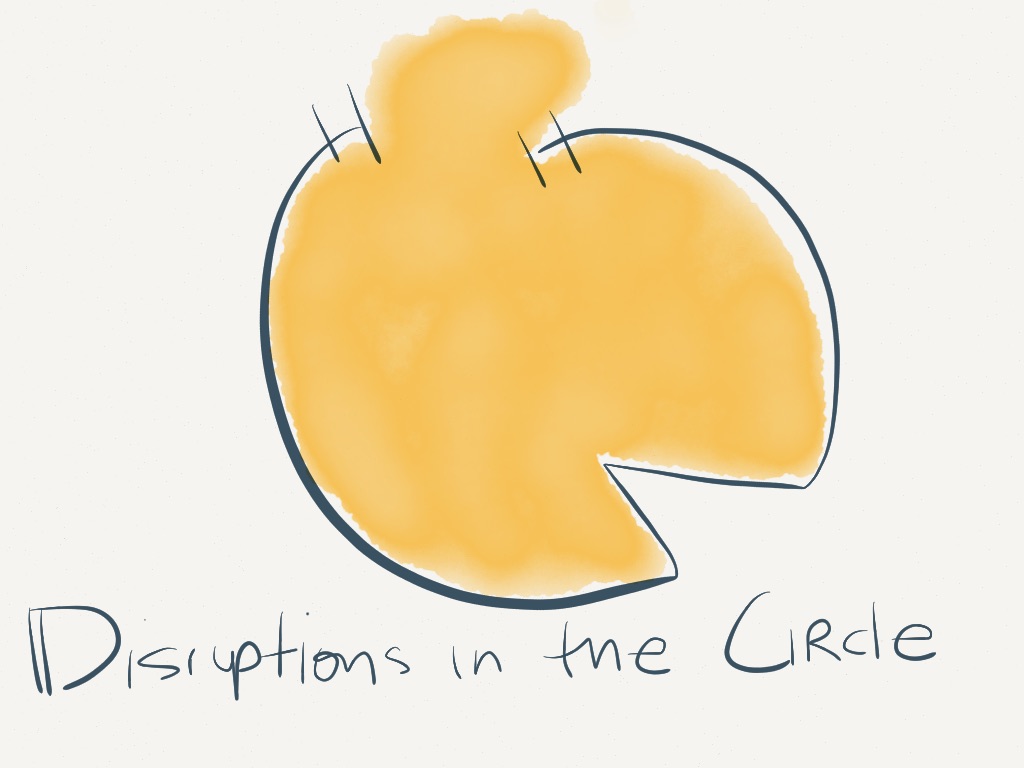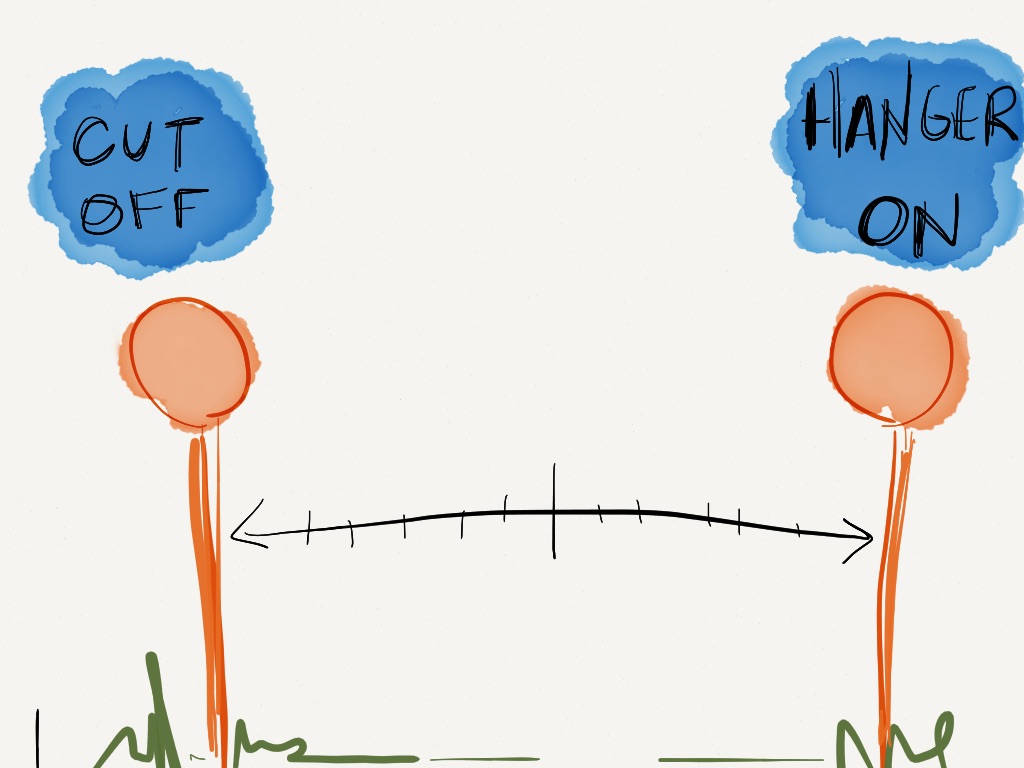The Gift of Thomas (John 20)
“But Thomas (who was called the Twin), one of the twelve, was not with them when Jesus came. So the other disciples told him, “We have seen the Lord.” But he said to them, “Unless I see the mark of the nails in his hands, and put my finger in the mark of the nails and my hand in his side, I will not believe.””
(John 20:24–25 NRSV)
Thomas as the Grieving One
Traditionally, Thomas has been known as “doubting” Thomas throughout the centuries because of this passage. A doubter here is like a skeptic, a questioner, someone who is non-compliant. Jesus’ words at the end of this passage are taken as chastisement:
“Have you believed because you have seen me? Blessed are those who have not seen and yet have come to believe.” (John 20:29 NRSV)
And maybe that’s how it was meant. But I want to attempt a different reading of this text, one that makes Thomas more relatable to our own experiences.
The first observation I want to make about Thomas is rather simple: Thomas isn’t doubting he is grieving.
What makes Thomas stand out to me in these accounts after the death of Jesus is that Thomas is the he seems to be the only one with some amount of feeling. When the other apostles come to Thomas and say they’ve seen Jesus resurrected from the death he says: “I won’t believe it unless I see it myself.” Which is both a very reasonable response, but also shows that as with any grief he’s dealing with bought of denial, anger and disappointment.
Thomas is someone who is hurting. He is someone who has just witnessed the traumatic death of his rabbi and friend, and someone for whom all the disciples believed would bring about a new kingdom on earth. In the face of all of this crashing down Thomas deals with the possibility things aren’t as they seem the way any of us would.
It’s like when we are sick or something really bad happens to us and someone says “look on the bright side,” how do you tend to respond?
Because Thomas’ grief is so heavy, he is not yet ready or even able to “look on the bright side.”
Does realizing that he is one who is in grief shift how you think about Thomas?
Working through Disruptions in the Circle

Last fall we looked at how in Godly Play they talk about dealing with “disruptions in the circle.” To put it rather mildly, the crucifixion of Jesus was a disruption in the circle for the disciples.
When things don’t go according to plan, when there is a rupture or a roadblock in life it is understandable that we are emotionally stressed, experience high anxiety and, as in the case of Thomas and the other disciples, grieve. And in turn, in times of grief, or other high anxieties, it is easy to become reactive.
So I want you to consider with me two extremes of how we react to grief and how this relates to Thomas and the other disciples:
Cut Off
On the one hand, the reaction is to close ranks or what we call “emotional cut-off.” In this closing of the ranks, we try to restrict the circle, or we find ways to make it smaller. For some, when grief becomes too much, we cut people out of the picture completely, or we cut ourselves out of the picture and put distance between us and them. We purposely lose any relational or emotional connection with others.
Think about those instances when you know of someone who died and others wanted nothing to do with them. They refused to go to and say goodbye while they were still living or they refused to go to the memorial afterward. This is the kind of cut-off I am talking about.
Cut-off is harmful to all kinds of reasons but mostly because it leaves a lot of unresolved residue in our lives that crop up unexpectedly.
[We see this in how the YM is trying to deal with our churches.]
What about Thomas? Thomas could have left and never come back. Or he could have been cut out of the picture by the disciples all together. The other disciples could have said, “no thank you, you’re out.” But neither of these are how the story goes.
In spite of their anxiety and grief they remain connected to one another.
Hangers On
On the other hand, there is another extreme in dealing with all of this and that is to hang on for dear life and not let go.
This is a kind of “frozen in time” phenomena where we do everything we can to keep something from happening, whether it is sabotage, or refusal to accept what is happening, or simply to force others to be just the way we want/need them to be because we are unable to accept the reality of the situation.
This happens more frequently in the death of a spouse or loved one where there was some unresolved issue in the relationship. The hanger-on is unable to let go because of guilt, or pain, or anger and so there becomes a kind of denial about the situation.
Other ways we see “hangers-on” is when kids leaving home for college or work or marriage and parents leave their bedrooms exactly the same way or refuse to acknowledge that their kid has grown up and made a life of his or her own.
Any place where we are afraid to function within the new reality we are faced with has the potential for us to get “frozen in place.”
Again, how does this play out in the life of faith?
Is there a “hanging on” in the story of Thomas?
Maybe if Thomas refused to accept that Jesus ever died or refused to believe after Jesus appeared to him then we’d have this being frozen in place. The community could have also responded differently, feeling threatened by the fact that he “doubted” and so they try to force him to into compliance or shame his behavior to create stigma so others won’t do it too.
On this side of the pole, we are so afraid to let go and move on that we get stuck.

We have seen both of these extremes played out in Christian history. There have been many many times when people have been cut out and cut off. Where the church has closed ranks unfairly. One only need to think about all those infidels and heretics in this way to begin wondering what was it that the church was so threatened by? Even early Quakers were often forcibly cut out, thrown in jail, beaten up and called heretics because of these same tendencies.
And there are plenty of places in which there have been hangers on, where we are unable to adapt to the situation and so we try and keep things the same.
This is at the heart of all fundamentalisms.
Fundamentalism is simply an emotional response to stress, anxiety, change of some kind, where we hang on for dear life and remain frozen in place. Thus we become brittle and unable to change. We may idols, icons, we become fixed in our relationship with God and others and we refuse to allow others to change either.
This is how Thomas, 2,000 years later, is still called doubting.
We are afraid of Thomas because we are afraid of facing our own pain, our own doubts, our own grief. What if instead of refusing to allow Thomas to change, we see him for who he is, one working through his grief and questions, and one who truly changes in the midst of great connections both with his friends and with Jesus himself.
Enlarging the Circle
In dealing with “disruptions in the circle” there are reactions that move us toward cut-off and reactions that move us toward extreme hanging on.
Instead of accepting either temptation, Jesus shows us another way to respond: enlarge the circle.
Where there is disruptions of any kind, what we need most in that moment is to find ways to enlarge the circle so that there is space to listen, space to breath, process and remain connected.
Thomas is not with the disciples when Jesus first came (20:24). Who knows where he was or what he was doing but we know that he was given the space to come and go as he needed. The circle was large enough that there was room to breathe. This is essential in these moments of grief. This isn’t the time to force hands, or “take the next train to clarksville.”
Instead, we have something to learn here about how we are to navigate these moments:
Jesus goes to great lengths to be responsive to Thomas. He moves toward him, he invites him to touch, experience, see for himself and THEN believe.
Imagine how this scene would be different if Jesus reacted to Thomas with cut-off or hanging on.
Jesus goes to great lengths then to be responsive by connecting to people on the fringes, honoring their own quests, honoring where they are at (Image on bulletin).
In times of uncertainty, anxiety, or grief the reaching out to connect and enlarge the circle is what Jesus models for us.
Thomas cannot see for himself the possibility of a new or different future, he needs others who are able to help him see, help him learn how to trust again. This is the power of connection in the midst of anxiety and grief.
Who are the Thomas’ in our midst, struggling? And how might I help to enlarge the circle for them?